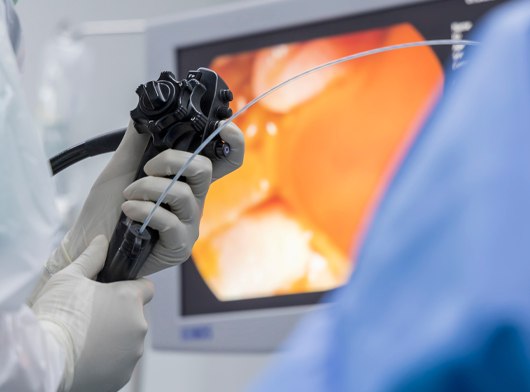- Indication: Doctors perform ERCP when the bile or pancreatic ducts have become narrowed or blocked because of
- Gallstones in the gallbladder
- Infection
- Acute pancreatitis
- Chronic pancreatitis
- Trauma or surgical complications in your bile or pancreatic ducts
- Pancreatic cysts
- Tumors or cancers of the pancreas
- Tumors of the bile ducts
- Procedures: Sedatives help you stay relaxed and comfortable during the procedure. A liquid anesthetic is sprayed on the back of the throat. This prevents gagging.
- Locates the opening where the bile and pancreatic ducts empty into the duodenum
- Slides a thin, flexible tube called a catheter through the endoscope and into the ducts
- Injects a special dye, also called contrast medium, into the ducts through the catheter to make the ducts more visible on x-rays
- Uses a type of x-ray imaging, called fluoroscopy, to examine the ducts and look for narrowed areas or blockages
- Open blocked or narrowed ducts.
- Break up or remove stones.
- Perform a biopsy or remove tumors in the ducts.
- Insert stents
Patient is asked to lie on the examination table. The endoscope is passed into the esophagus, stomach, and into the duodenum. A small camera mounted on the endoscope sends video images to a monitor. The endoscope pumps air into your stomach and duodenum, making them easier to see.
During ERCP, the doctor
The doctor may pass tiny tools through the endoscope to



.png)
